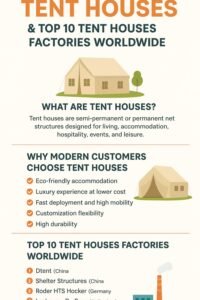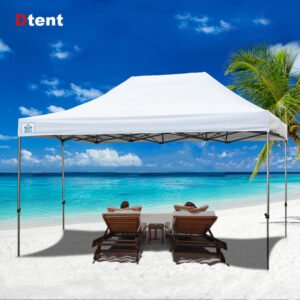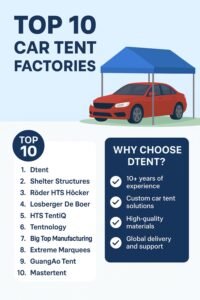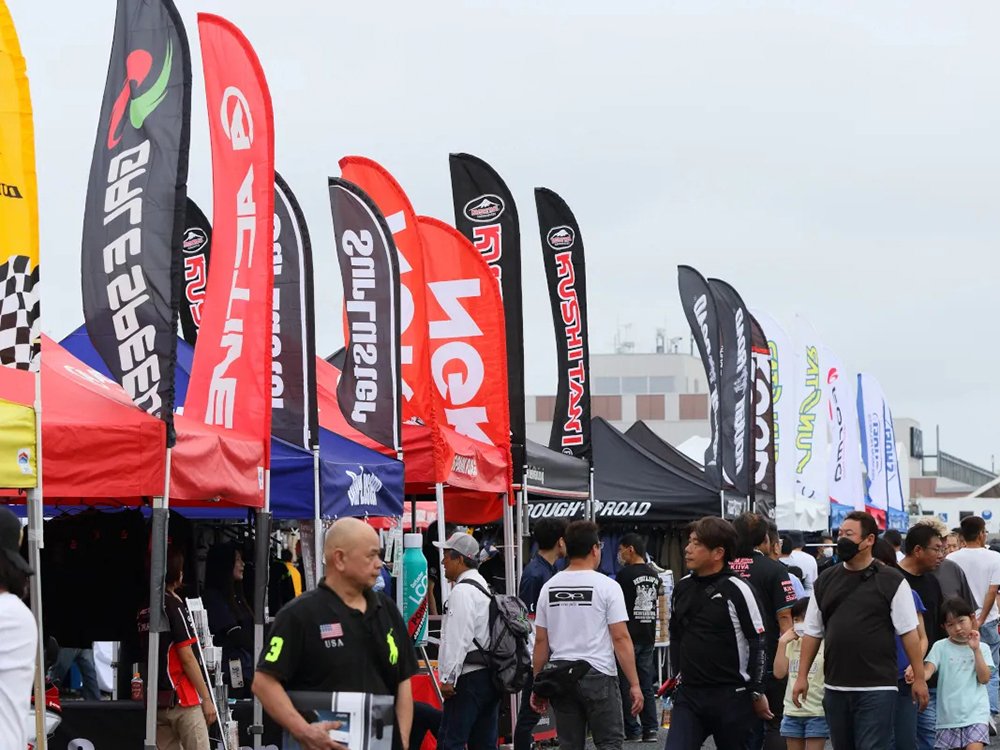Last Updated on 06/17/2025 by dtent.net
As tent manufacturers deeply rooted in a passion for the outdoors, we believe that the future of camping lies not in conquering nature, but in coexisting with it. Today’s campers seek more than just shelter—they crave an immersive experience that blurs the line between human craftsmanship and the natural world. In this exploration of nature-centric tent design, we delve into how innovation is aligning with ecology to create shelters that respect, reflect, and rejuvenate the environments they inhabit.
1. Biophilic Design: When Tents Mimic Nature’s Genius
Biophilia—the innate human connection to nature—is reshaping tent architecture. By studying natural systems, designers are creating structures that function like living organisms.
A. Structural Inspiration from Natural Forms
- Honeycomb Framing: Borrowing from beehives, hexagonal pole configurations optimize strength-to-weight ratios while using 20% less material than traditional designs.
- Spiderweb Suspension: Ultra-light tents now use radial guyline systems inspired by orb-weaver spiders, achieving stability with minimal ground disturbance.
- Tree Canopy Dynamics: Asymmetrical rainfly designs mimic forest canopies, directing rainwater away while allowing dappled sunlight through strategic mesh panels.
Case Study: The ForestVeil 3P tent uses branching pole structures that replicate tree limbs, reducing wind resistance by 35% compared to dome tents.
B. Adaptive Camouflage
- Season-Shifting Colors: Fabrics embedded with thermochromic dyes change hue with temperature, blending into autumn foliage or summer greenery.
- Texture Replication: 3D-printed fabric surfaces mimic bark, lichen, or rock textures to visually “disappear” into backgrounds.
2. Materials That Give Back to the Earth
The next frontier in eco-conscious design isn’t just sustainability—it’s regeneration.
A. Living Materials
- Mycelium-Infused Fabrics: Hybrid materials combining mushroom mycelium with recycled polyester create semi-living walls that absorb CO₂ and release oxygen.
- Algae-Based Waterproofing: Replace toxic PFAS coatings with algae-derived membranes that biodegrade safely while nourishing soil.
B. Zero-Waste Circular Design
- Seed-Embedded Floor Mats: Mats containing native wildflower seeds disintegrate by season’s end, rehabilitating campsite vegetation.
- Nutrient-Rich Decomposition: The BioReturn 1P tent, made of hemp and chitosan (from crab shells), dissolves into fertilizer within 18 months of burial.
Industry Impact: A 2026 EU mandate will require all disposable festival tents to meet 90% biodegradability—a standard our prototypes already exceed.
3. Low-Impact Engineering
Modern tent is evolving from temporary invaders to gentle guests in natural spaces.
A. Root-Friendly Anchoring
- BioStakes: Stakes made from compressed bamboo fibers and cornstarch dissolve over time, eliminating permanent ground scars.
- Floating Foundations: For delicate environments like dunes or tundra, inflatable airbeam bases distribute weight as gently as a grazing deer (0.05 psi).
B. Silent Stewardship
- Owl-Inspired Noise Reduction: Micro-perforated rainfly fabrics absorb sound like owl feathers, reducing interior noise by 12 dB while masking camper sounds from wildlife.
- Lighting That Protects Wildlife: Amber-wavelength LEDs in the NightGuard series prevent disruption to nocturnal ecosystems, unlike harsh white lights.
4. Tents That Work with Weather, Not Against It
Instead of battling elements, next-gen tents harness them.
A. Passive Climate Control
- Termite Mound Ventilation: Chimney vents inspired by African termite mounds create natural airflow, maintaining a 72°F (22°C) interior despite external extremes.
- Pinecone-Inspired Adaptive Venting: Humidity-responsive vents open/close like pinecone scales, automatically balancing airflow.
B. Energy from the Environment
- Rain-Powered Lighting: Piezoelectric fabric panels in the StormHaven model convert raindrop impact into LED pathway lighting.
- Solar Moss Charging: Thin-film solar cells dyed with chloroplast-rich moss extracts achieve 18% efficiency—even under forest shade.
5. Cultivating Connection Through Sensory Design
Truly nature-integrated tents engage all senses to deepen wilderness immersion.
A. Aroma-Infused Shelters
- Essential Oil-Embedded Fabrics: Slowly release forest scents (pinene from pines, geosmin from rain) to reduce stress hormones by up to 40% (per UCLA study).
- Native Plant Integration: Mesh pockets for wild herbs like lavender or sage let campers customize their sensory space.
B. Tactile Terrain Interaction
- Barefoot-Friendly Floors: Floors with varying textures (smooth pebble, springy moss patterns) stimulate proprioception while protecting delicate ground.
- Morning Dew Harvesting: Silicone-coated awnings channel condensation into a 1L dawn tea supply, connecting drink to environment.
6. Cultural Wisdom Meets Modern Tech
Indigenous stewardship traditions are guiding high-tech solutions.
A. Nomadic Heritage in Smart Tents
- Mongolian Ger Dynamics: The SkyGer 4P’s tensioned lattice walls use ancestral geometry to withstand 60 mph winds, paired with app-controlled insulation.
- Saami Snow Collaboration: Reinvented lavvu tents incorporate reindeer fur-lined solar heaters and ice-anchor systems validated by Arctic herders.
B. Land Acknowledgement Through Design
- Eco-Etching: Laser-cut patterns from local Indigenous artists adorn tent fabrics, with QR codes sharing stories of the land’s original stewards.
- Soil Sampling Kits: Partnering with conservation groups, tents include tools for citizen science biodiversity surveys.

7. The Ethics of Invisibility: Leave-No-Trace 2.0
Next-gen tents aim to leave sites healthier than they were found.
A. Active Ecosystem Support
- Pollinator Portals: Laser-cut mesh patterns in the BeeHaven series serve as native bee nesting guides while keeping insects out.
- Microbial Rebalancing: Tent bases coated in probiotic sprays replenish soil microbes compressed by human activity.
B. Firefly-Safe Illumination
- Species-Specific Lighting: Using Cornell Lab of Ornithology data, the Firefly 2P emits mating-signal mimicking glows that don’t interfere with insect reproduction.
Case Study: The Rewilding Tent Project
In partnership with Rewilding Europe, we developed a tent that actively aids habitat restoration:
- Features:
- Hawk silhouette decals deter small mammals from overgrazed areas.
- Built-in seed dispersal balls for endangered flora.
- Carbon-negative production (-3kg CO₂ per unit).
- Outcome: 12,000+ native plants reintroduced via camper participation in 2023.
Tents as Tools of Reconnection
The era of tent as sterile, nature-defying pods is over. Today’s designs invite us to camp not as detached observers, but as engaged participants in Earth’s ecosystems. At Dtent, we measure success not by how much nature we exclude, but by how seamlessly our shelters facilitate moments of awe—whether it’s watching bioluminescent fungi through a rainfly, or falling asleep to the scent of rain-fed soil.
As you plan your next escape, ask not just “Will this tent protect me from nature?” but “How will it help me belong within nature?” The wild is calling—and now, it’s designing the call.
Our story began 15 years ago, when we established our factory with the vision of becoming the leading producer of customized tents, canopies, flags, umbrellas, and other related products. Since then, we have been dedicated to providing high-quality and tailor-made solutions for our clients, partnering with numerous reputable brands in the industry.
We are a professional factory specializing in the production of custom-made tents, canopies, flags, and other event supplies. With 15 years of experience, we have a strong research and development team and impressive production capabilities. We have also served many brand clients and have earned a solid reputation in the industry.
Are you a Trading Company or Manufacturer?
We are a manufacturer specialized in Folding tents, Outdoor umbrellas, Beach flags, Advertising Banners
Can you do design for my ideas or drawing?
Yes, we have experienced designers and our own molding factory. According to your requirements, we can design or open mold which has a competitive price.
Can you print any logo for customer?
Yes, both OEM and ODM is available.
How long does sample take?
Sample will be ready within 5-7 days, depends on your printing and material requirements.
What is your advantage?
Cost effective; with low price; Time effective: we promise to make the mass delivery within 30 days Service effective: Our sales people promise to reply your enquiry within 12 hours.
Can I make my customize logo and packaging?
Yes, please contact us for specific details if you need a logo or custom packaging.














